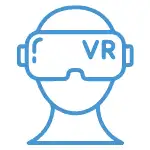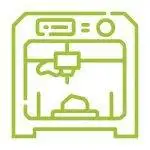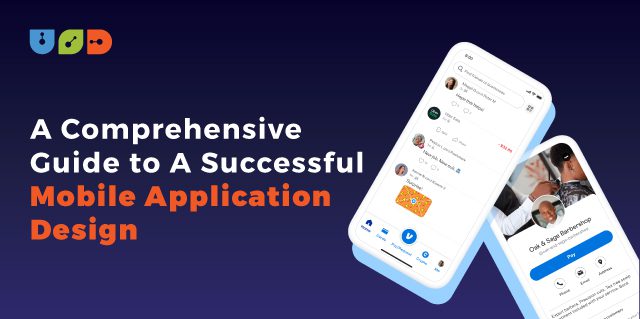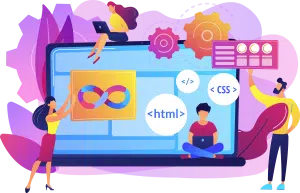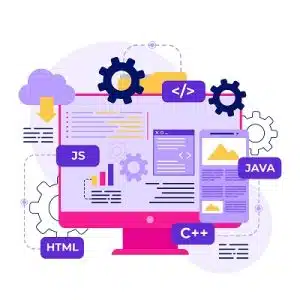Table of Contents
ToggleIn this technological world, people are engaging with their mobile phones at an ever-increasing rate. The average time a mobile user spends daily on his phone is around 4 hours and 30 minutes. But wait, what are they using it for? You guessed it right, for mobile apps. Therefore, users demand more from their mobile app experience, such as enjoyable interactions, greater user-friendliness, and faster loading times. But with lots of apps, how can you stand out from the competition? The answer is just a high-quality mobile application design.
The proverb “the first impression is the last impression” must be familiar to you. The same holds true for your mobile application. The story does not just finish with the development; there are a lot of things attached. A captivating application design or responsive design app is crucial to keep people hooked on your mobile application in today’s fast-paced world, where decisions are made in an instant! If you want your app to succeed, you must consider app design an essential part of your product strategy.
There are many factors to consider when designing mobile apps. We have compiled many helpful, practical recommendations in this article that you can use to design compelling mobile applications.
What is Mobile Application Design, and Why It Matters?
Mobile application design is the process of creating engaging and dynamic apps. An app design refers to the overall feel of the app. Application design covers every visual component of a mobile app that influence how the app works. Now that you know the meaning of a mobile app, it’s necessary to know its importance. If you think from a user perspective, you might notice that the first thing that catches a user’s attention is an innovative UI/UX design.
Any mobile app design agency focuses on attracting and retaining users with the intent to convert them into loyal customers. The app designers work on many aspects of the design, from UX testing to responsiveness and information architecture. A user interface design encourages users to interact with your app. But what precisely is a user interface design?
- A user interface design is about building the visual elements and appearance of the software.
- It focuses heavily on the look and style.
- It includes colorful themes, fonts, buttons, icons, and every interactive component.
Step-By-Step Guide to Creating a Compelling Mobile Application Design
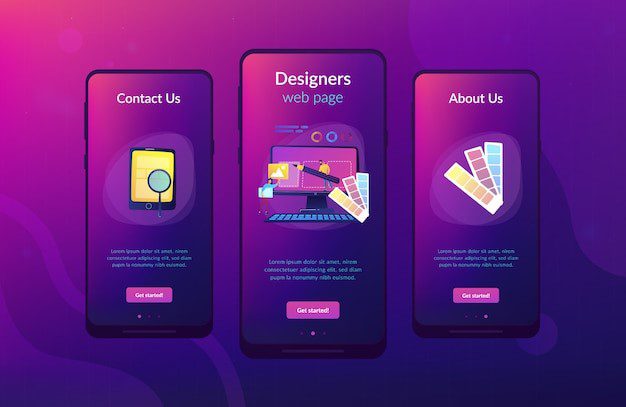
We have covered some of the basics of application design in the parts before this one. Now, we’ll go into greater detail about the process of app design. Remember, app designers always collaborate with marketing, development, and other departments. They create a great place for newcomers in the industry.
The next sections will take this reality into account.
1. Planning and Research
The planning step includes deciding on the strategy for the overall design and development process, including whether to choose native, hybrid, or cross-platform development. It also entails defining all the functional requirements of the mobile app and exploring the business objectives. If the project involves continuous change, it is important to plan accordingly by developing a roadmap to achieve project milestones.
After establishing primary business objectives and finalizing the plan, conducting research becomes necessary. User research serves as the best tool to connect with potential users and discover the most suitable tools for their needs.
- Audience Analysis: The important part of research is to analyze who is your target audience and what does it want? The people who either downloaded a specific app or perhaps expressed a strong interest in doing so are your target audience. Understanding how people interact with operating systems and what they want is essential for producing designs that appeal to end users.
- Competition Analysis: User experience designers can better understand industry standards and identify growth opportunities by using competition analysis. At this point, user input design teams can also find competitive UX/UI features by drawing on the achievements and experiences of other companies.
2. Wireframing and Prototyping
Wireframing is the part where the designers have to work with the developers to create the best layout. App development businesses create wireframes that outline each screen in the app. App designers use these to map out the program’s architecture, conversion areas, and UI components. At subsequent stages of wireframing and prototyping, layouts and basic features are created.
3. Developing Custom Mobile App
Throughout the development process, developers code and program the app’s features and functionalities. The front and back sides of the app are developed by the custom app development company utilizing coding languages like Swift, React Native, or Java. Additionally, a lot of mobile apps include third-party resources like databases, APIs, and analytics programs that are integrated by mobile app developers.
4. Choosing the Best Testing Standards
Testing mobile app design is a crucial part of the process as it ensures that the app is meeting the requirements. A design that meets the requirements and ensures high performance and high quality of the design. The main goal of the design testing is to eliminate the errors that are affecting the user experience. Following are the design testing methods that are helpful in the identification of the issues.
- Usability Testing
- Functional Testing
- Performance Testing
- Interruption Testing
5. Deploying Mobile App
At this stage, the app is published to the platforms like Google Play Store or Apple’s app store. The developers deploy the app, and the businesses keep a check on the submission procedure. They also ensure the app is not violating any rules and regulations of the store.
Conclusion
The mobile application design is a critical stage in developing a compelling mobile app that caters to the needs of its target audience. App development businesses can make successful mobile apps by having a thorough understanding of the app design process. Each step of the process mentioned above is crucial to create an aesthetically appealing app that is practical and user-friendly.






